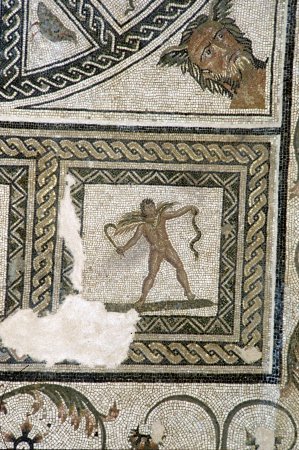Dear visitor, this museum is no
longer managed by this Archaeological Superintendence of Emilia-Romagna
For further information please contact the following telephone or email
The National Archaeological Museum of Sarsina
Via Cesio Sabino 39
Sarsina (FC)
Phone +39 0547.94641
pm-ero.muarchsarsina@beniculturali.it
The archaeological Museum
of Sarsina was founded in 1890, when the numerous Latin inscriptions found in
the area during the past centuries were for the first time collected and
exhibited to the public. Most of them already belonged to the collection of a
local humanist, Filippo Antonini.New
discoveries later enriched these collections in particular as a result of the
archaeological excavations started in 1927 in the Roman necropolis of Pian di
Bezzo.
The graveyard area has
indeed rendered a great deal of monuments, all exceptionally preserved as they
were protected by the thick layer of soil that had drifted over the bottom of
the valley following an antique flood.


Particular
of Rufus mausoleum (left) - Particular of the "Dyoniso's triumph" mosaic (right)
The objects, arranged in thirteen rooms, are all of local provenance and cover a chronological period starting from prehistory up to the early Middle Ages. The richest and most significant records are nonetheless those belonging to the Roman ages, dating from III century B.C. to IV century A.D.
The finds gathered in the inhabited centre and in the surrounding area illustrate the history and features ofthe old Sarsina, the native land of Plautus. The town, that had finally been the county town of the Umbrian people living in the valley of the Savio river, was occupied by the Romans in 266 B.C. and became a prosperous municipality with close trade and cultural relations with the town of Ravenna.

Reconstruction of a tomb
The ground floor of the
museum houses the epigraphic material ranging from the numerous gravestones
belonging to the oldest nucleus of the museum itself to the sepulchral
monuments found in Pian di Bezzo: grave steles, inscribed pillars, which still
stand on their original bases, and among these numerous architectonic remnants
belonging to major mausoleums.
Two monumental tombs
particularly stand out against the others. They date back to the end of I
century B.C. and have recently been restored and fully rebuilt: the tomb of
Verginius Paetus with a Doric frieze 'dado' and embossed civil and military
decorations, and Rufus's imposing mausoleum, over thirteen meters high; a shrine
with a pyramidal spire, a rich architectonic decoration and a set of accessory
statues. Four of them represent draped figures.
Other inscriptions come
from the urban area. They are dedicated to senior local judges, emperors and the
gods venerated in the area.
A religious meaning is also
to be found in a group of worship statues dating to the Il century A.D., and
representing Egyptian and Eastern gods, of which the young Attis with his
Phrygian cap stands out.
Public buildings are
witnessed by a series of inscriptions referring to the construction of the city
walls in I century B.C. and by numerous architectonic frameworks in local stone
and marble, such as columns and capitals dating back to the Republican period
and the late Imperial Age.
The household
field is represented by the big illustrated polychromatic mosaic of the
beginning of III century A.D., where a
triumphant Dionysus, standing on a chariot pulled by tigers, shows up among
minor characters and naturalistic elements.

On the first floor, several
collections of materials bear witness to the geological and paleonthologic
aspects and the kind of population living in the valley before the
proto‑historic period to the Umbrians' conquest. Even in this case, the
records dating to the Roman period are the most numerous ones and include also
plenty grave stocks coming from Pian di Bezzo and voting offerings found in the
thermal sanctuary of Bagno di Romagna.
Among the finds coming from
the town, in addition to a sample of building and flooring elements and to some
valuable statues, there are the fittings and household goods of two houses
dating to the imperial age and including illustrated mosaics, bronze ornaments
and table vases made in glazed baked clay and decorated with embossed figures.